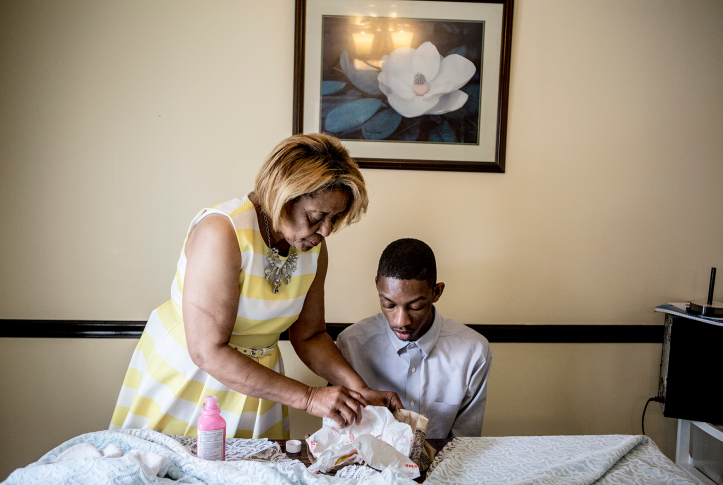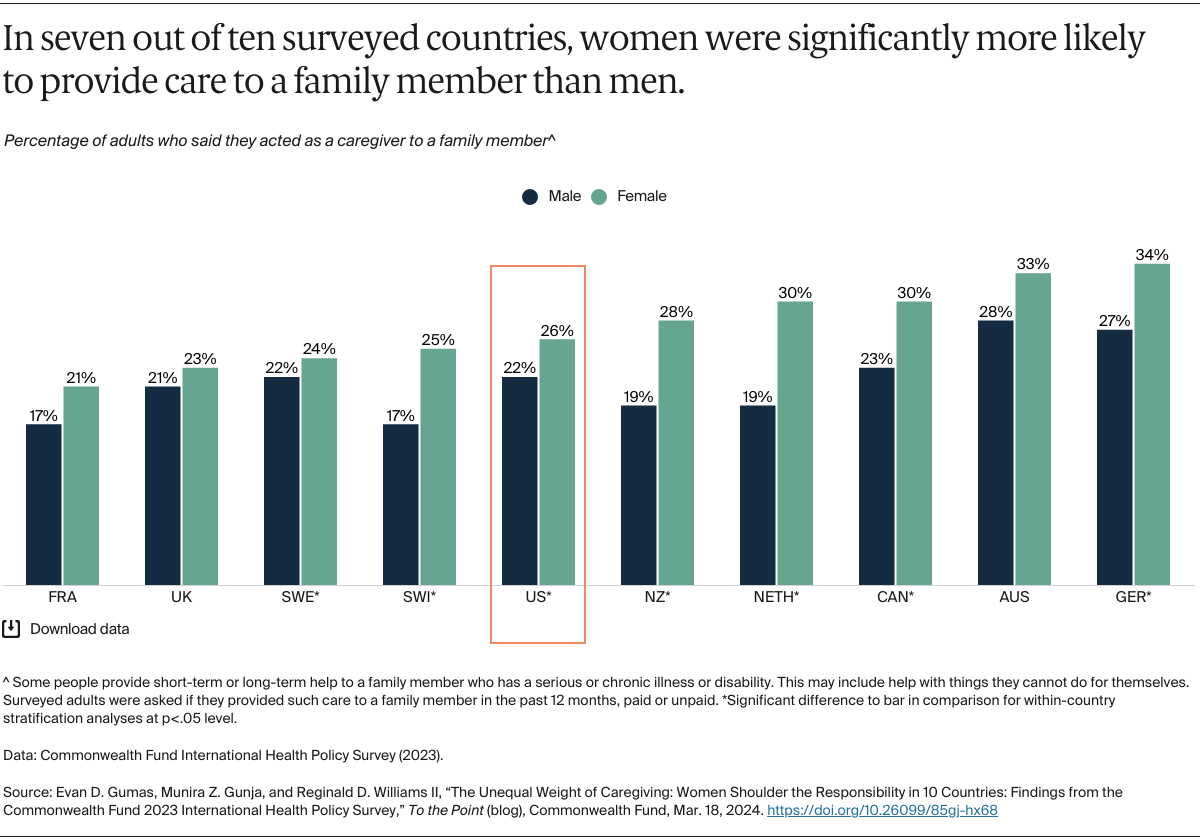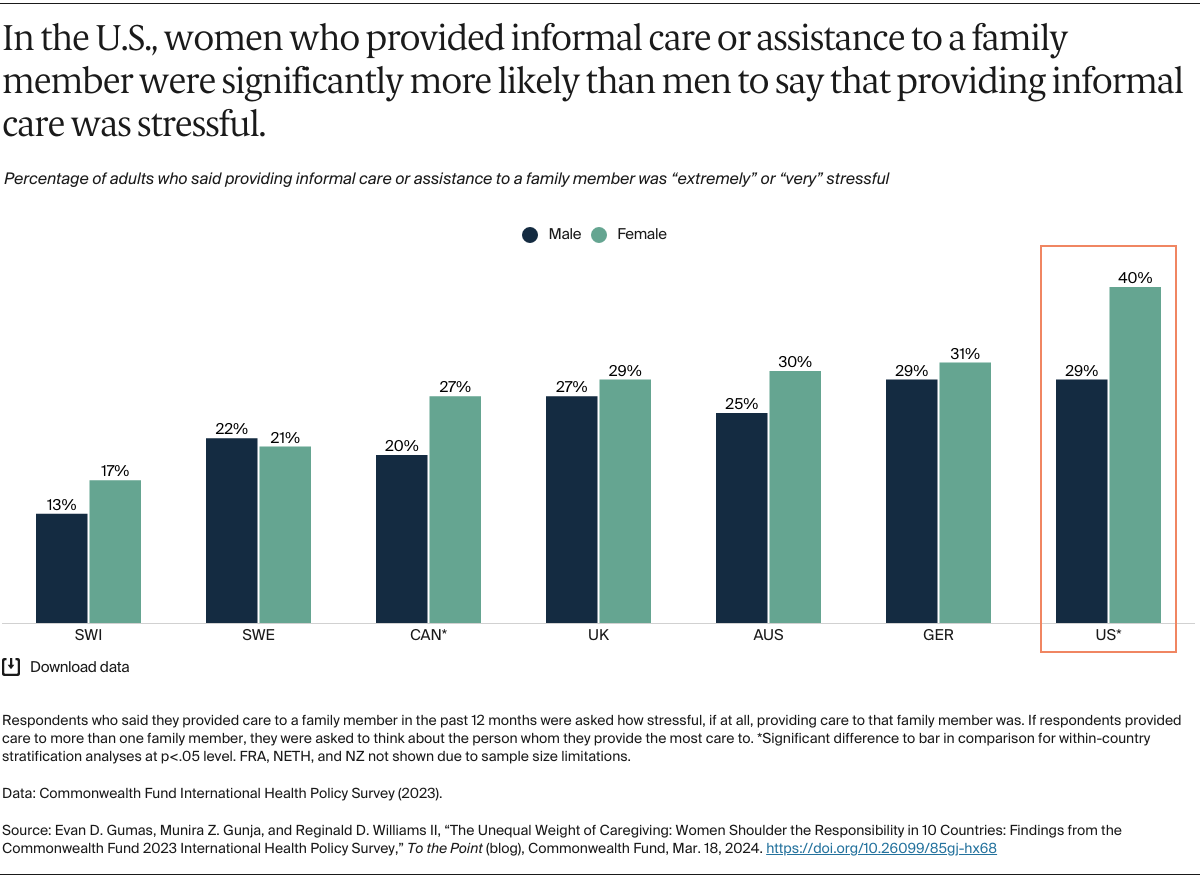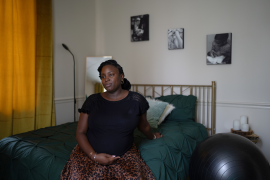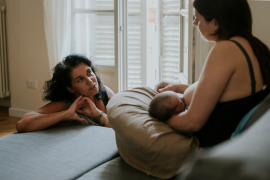Of the respondents who provided care to a family member, women in the U.S. were significantly more likely than men to report that providing care was stressful. This may be due to a higher caregiving burden as well as unique stressors women experience compared with men. There were no significant differences between men and women in any of the other surveyed countries.
Providing care, whether formally or informally, often requires extensive physical, mental, and emotional energy, resulting in caregivers experiencing higher rates of stress, anxiety, and depression compared with those who do not provide care. Women who are caregivers are more likely than male caregivers to develop symptoms of anxiety and depression and, due to this stress, are at a higher risk for health problems like a weakened immune system or chronic diseases.
Caregiving Landscape in the U.S. and Surveyed Countries
It is critical that caregiving becomes more equitable among women and men in all surveyed countries. Currently, women act as caregivers more than men in most of the countries surveyed but women’s earnings are more important than ever to ensuring financial stability, retirement security, and the economy, while also being an integral part of family incomes. When women bear the brunt of caregiving, there are economic consequences for families and the economy. During the COVID-19 pandemic, women were twice as likely to leave the workforce as men to become caregivers. Caregiving options must improve to allow women choices regarding remaining in the labor force or caring for family members.
In the United States, there is a growing strain on caregivers. Most adults age 65 and older rely on unpaid caregivers, like family members, for long-term care. The over-65 population is projected to increase by almost 50 percent in the next 30 years, indicating that — absent an unforeseen change — millions more Americans will become caregivers. Most care is paid out-of-pocket. In addition, informal caregivers report spending an estimated 26 percent of their income on caregiving costs, like groceries or household supplies.
Several countries have ways of reducing the financial burden. France, Germany, and the Netherlands provide flexible cash and service benefits that can be used to pay for certified caregivers or, in some cases, reimburse family members who provide care. Australia and the United Kingdom provide income support in the form of direct payment to family caregivers and have enacted flexible work policies that give caregivers the right to request flexible working arrangements like changes to start and end times, number of hours, or work location, though employers are able to deny such requests. While these reforms may help alleviate some of the financial burden, our findings show that additional reforms are still needed to reduce caregivers’ stress.
Some states in the U.S. offer reimbursements to reduce cost. In Arizona, the Family Caregiver Reimbursement Program repays caregivers for the cost of home modifications. Medicaid provides support for family caregivers in nearly all states, with 49 states providing respite care and caregiver training. Under authorization from the COVID-19-era public health emergency, these same states expanded benefits for caregivers like allowing for virtual evaluations for eligibility for home and community-based services and level of care needed. Many states have made certain caregiving benefits permanent, including increased payment rates, virtual evaluations of eligibility or care level, and enabling family caregivers to be paid providers. But some ended or reduced caregiving benefits when the public health emergency expired.
As states move to codify, curb, or eliminate some family caregiver policies, policymakers should take note of policy priorities articulated by caregivers like financial compensation for caregiving and reimbursement for out-of-pocket expenses related to it. Through proposed rules or administrative changes, the Centers for Medicare and Medicaid Services could help advance these services at the state and federal levels.
